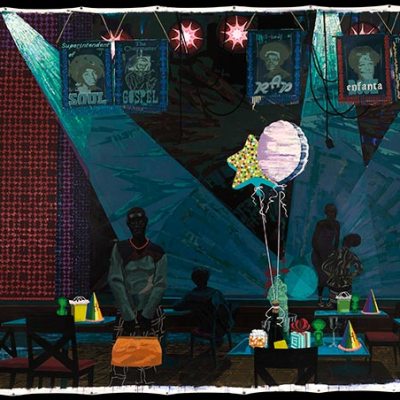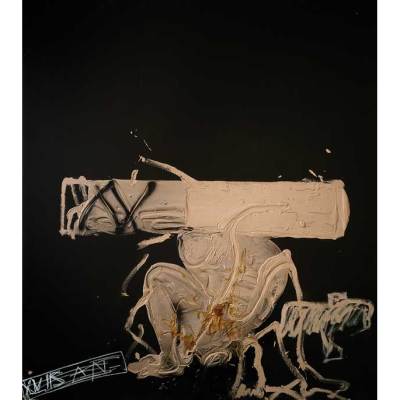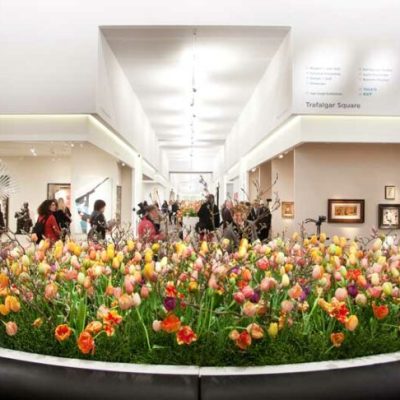For a long time, the art of Antoni Tàpies (1923–2012) has succeeded in being all things to all people: he is an Abstract Expressionist to some and a conceptualist to others; feted here for his mysticism and there for his materialism. The works currently at Timothy Taylor are no less contradictory. They find the artist at his most personal and most universal, his most grotesque and most peculiarly romantic. Consisting of eight paintings, many of them very large, and few of which have been seen before in this country, ‘Revulsion and Desire’ impresses chiefly with the works’ earthy physicality. Visceral and imposing, they promise a transcendence from the ground up.
Capgirat (2005), Antoni Tàpies. © Comissió Tàpies/VEGAP Courtesy Timothy Taylor
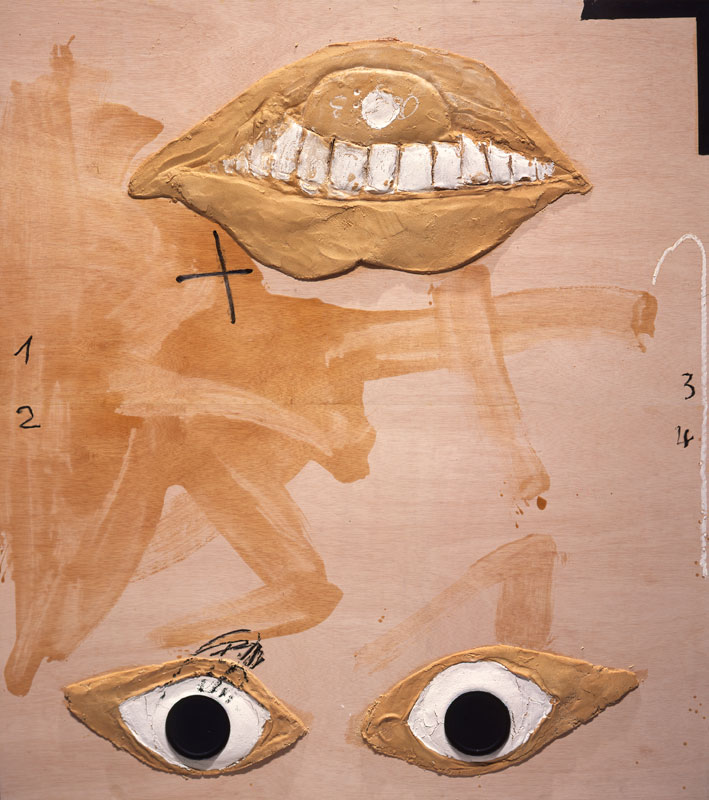
Tàpies is one of the most important Catalan artists of the 20th century and since his reputation has only grown since his death in 2012. Born in Barcelona in 1923, he often credited his philosophical awakening to a long period of convalescence during the Second World War, after a bout of tuberculosis. Besides forcing upon the bedridden young artist time to read and reflect, it was an experience that nurtured his appreciation of the body’s contingency, its continuity with the world it inhabits. In contrast with the taste for the sublime promoted by his strict Catholic schooling, art became for Tàpies, as he put it in a series of 1991 conversations with Barbara Catoir, ‘a means of communicating with things’.
Matèria sinuosa (2010), Antoni Tàpies. © Comissió Tàpies/VEGAP Courtesy Timothy Taylor
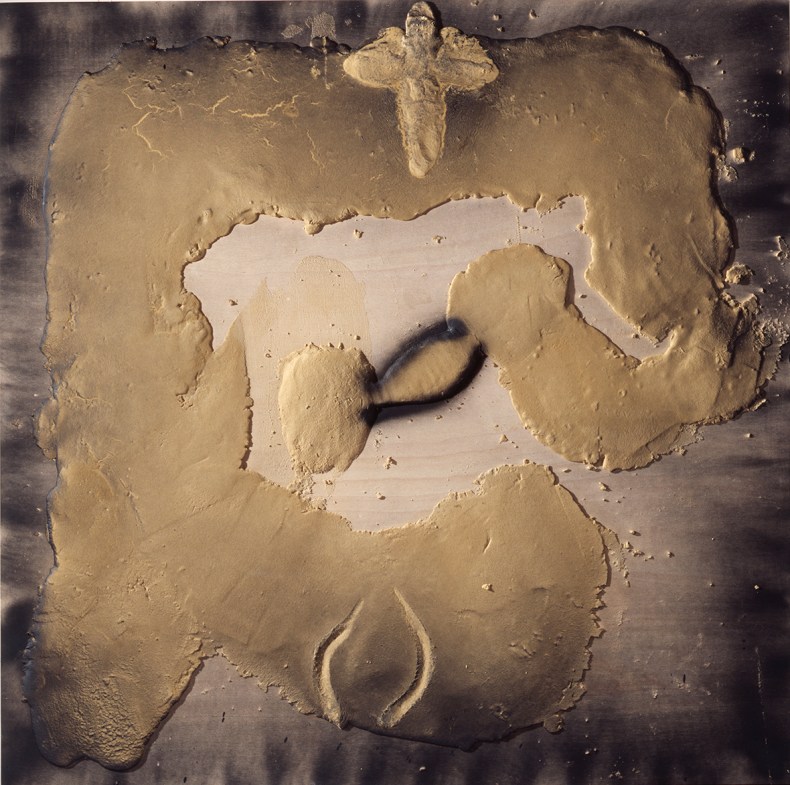
There is a remarkable consistency in the work here, made between 1999 and 2011. All eight paintings eschew canvas for wood, often left raw and unvarnished, and share a sepia-toned palette of browns and beiges. From the colon depicted in Matèria sinousa (2010) to the runny nose in Respiració (1999) and the defecating anus in Cames I diari (2005), they share, too, a frank obsession with the body and its functions. This is far from the idealised body of classical statuary, but a body riddled wth internal torments. The burnt, black smudge at the centre of Matèria sinousa, in particular, seems suggestive of cancer. The resinous, sandy material that these bodies and body parts are all formed from is forever crumbling at the edges, like well-weathered rocks or stale bread.
Elsewhere, however, there is a tenderness, of sorts. Cames I AT (2011), one of the many works in Tàpies’s oeuvre to feature the letters A and T – both his own initials and those of the first names of the artist and his wife Teresa – presents a pair of pudgy legs with a mass of real human hair at the crotch and a distorted squiggle that might represent the genitalia of either sex. Painted just a few months before Tàpies’s death, it suggests a desire to become one with his partner of over half a century that, despite its icky presentation, can’t help but be rather touching.
Cames i AT (2011), Antoni Tàpies. © Comissió Tàpies/VEGAP Courtesy Timothy Taylor

Legs are a recurring feature in this show, with three out of the eight works titled wholly or partly with the Catalan word ‘cames’. All six of these limbs have been formed out of the same doughy material. From the 1950s onwards, Tàpies employed a thick impasto-style of painting, imbued with materials like sand, soil, and marble dust. But what is notable about these later works is the position in which they place the observing subject: on the ground, looking up. That he manages to do this without being domineering – Tàpies’s paintings may be big, the largest here is over three square metres, but they are certainly not monumental – is a testament to the artist’s humanity. ‘Revulsion and Desire’ demonstrates beautifully that, even in his final years, Tàpies still had plenty to say about the higher power of brute matter.
‘Antoni Tàpies: Revulsion and Desire’ is at Timothy Taylor, London, from 16 February–18 March’

